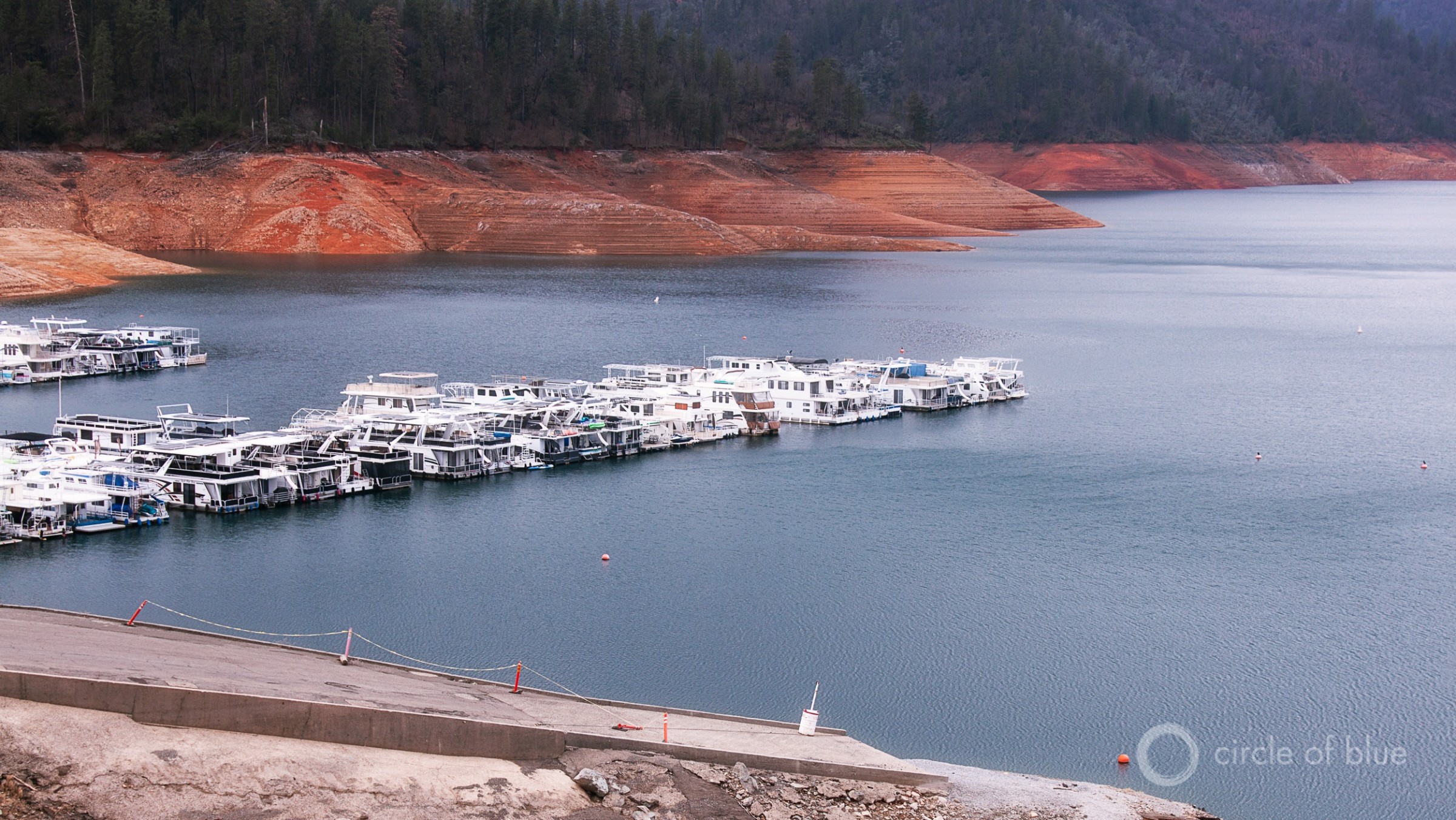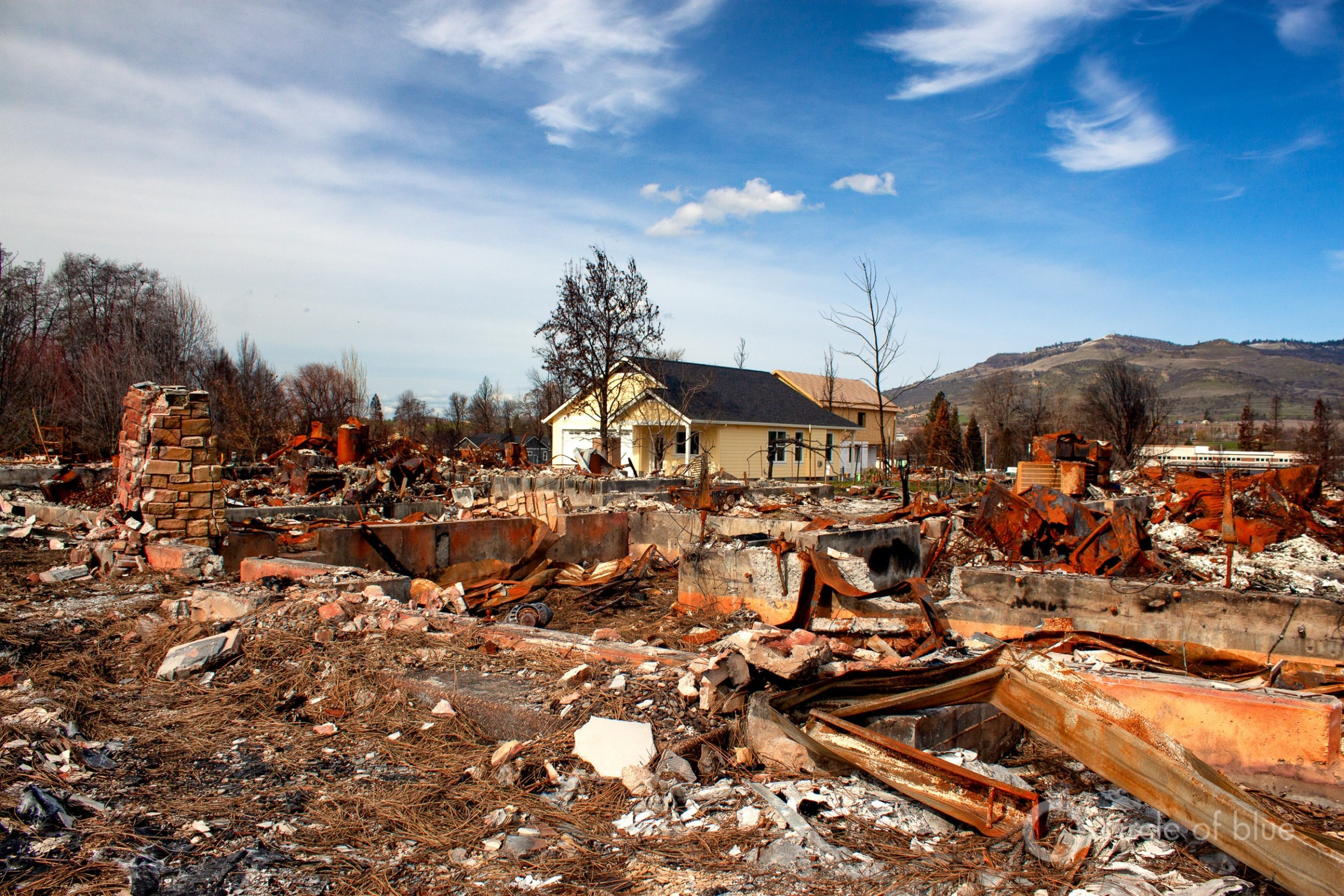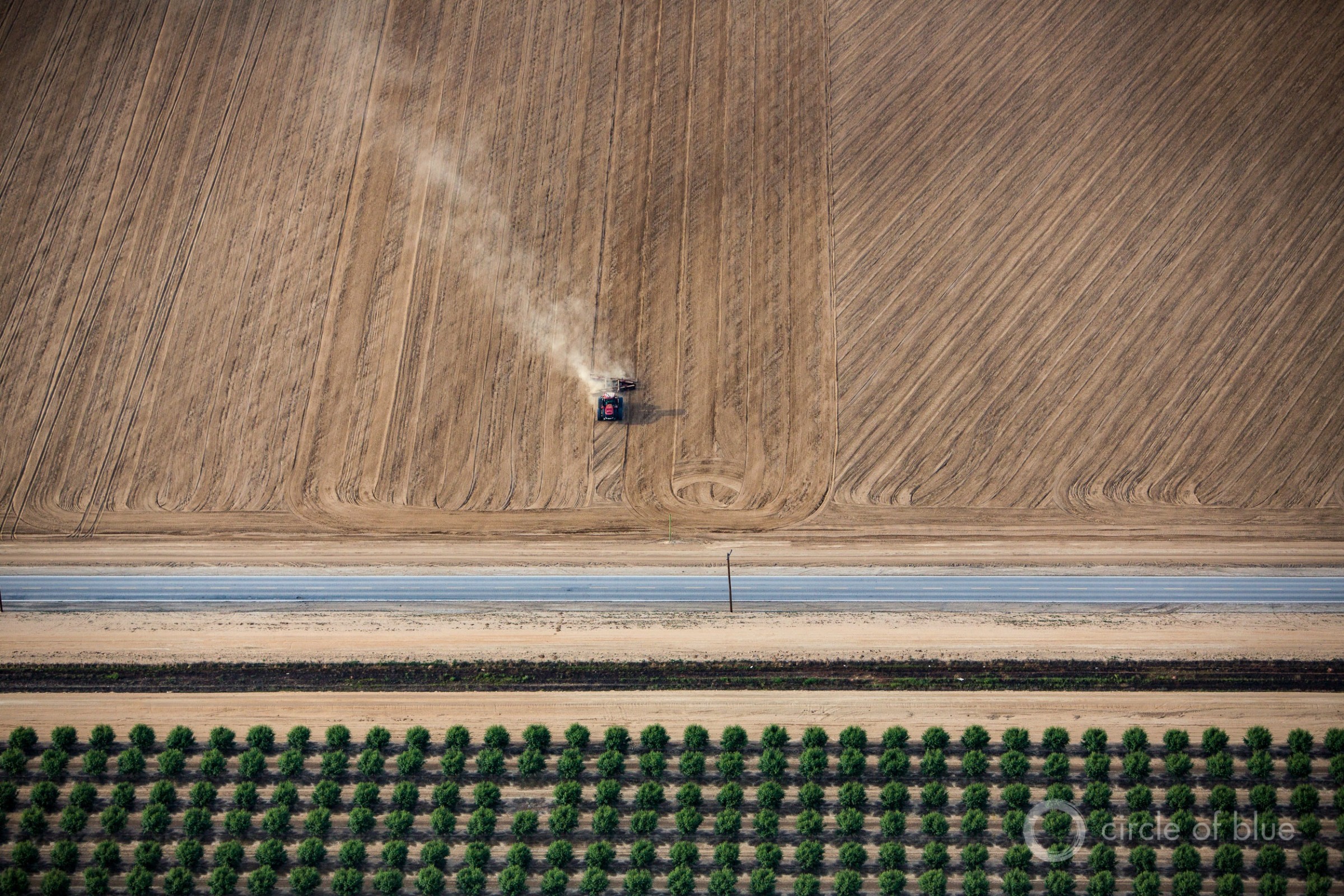When water stops flowing, painful days are at hand.

Lake Shasta was low enough on March 8, 2021 that a boat ramp at Bridge Bay did not reach the water. Today, the largest reservoir in California is just 40 percent full. Photo © Brett Walton/Circle of Blue
- Nearly 89 percent of nine western states are in some form of drought, and more than a quarter of the region is considered in exceptional drought, the worst category in the U.S. Drought Monitor.
- Droughts leave deep bruises that may not surface for months or years. Too much heat and too little rain can cause ecosystems to collapse and hasten the spread of non-native species.
- Over the coming decades, a warming climate will cause more frequent and intense droughts, especially in the Colorado River basin.
By Brett Walton, Circle of Blue – June 24, 2021
[bctt tweet=”Over the coming decades, a warming climate will cause more frequent and intense droughts, especially in the Colorado River basin.” username=”circleofblue”]
It develops in stages, a story that builds upon itself. A few cloudless days. Then a rain-free week. Soon a hot, dry month.
Now the hills are brown and the crops need watering — the first signs of drought.
The intensely dry conditions that have settled over the American West and Upper Midwest this year are well past the brown hills stage. Nearly 89 percent of nine western states are in some form of drought, and more than a quarter of the region is considered in exceptional drought, the worst category in the U.S. Drought Monitor.
The indicators of widespread dryness are everywhere. Lakes Mead and Powell, the major reservoirs on the Colorado River, are 35 percent full with a two-year outlook that worsened each month this spring. California officials told vineyards along the Russian River in May that the system is too depleted for irrigation. In Utah’s Great Salt Lake in April, sailboats were lifted out of receding waters too shallow to float. In the Klamath River that flows between Oregon and California, few juvenile salmon are expected to survive this season. In Arizona, the Rafael Fire, burning in the Prescott National Forest some 25 miles southwest of Flagstaff, grew to 36,000 acres since it was sparked on June 18 by lightning.
When water stops flowing, painful days are at hand — even if the pain is not immediately evident.
“The complexity of the drought phenomenon is not well understood by most people,” said Roger Pulwarty. Some people will say that we’ve experienced drought before, he mused. “Well, not like these. Not for this extent, not really addressing all the diverse ways in which it affects our economy, through the environment, through trade.”
Pulwarty has wrestled with these questions about the consequences of drought longer than most. He was the director of the National Integrated Drought Information System, a drought monitoring and planning collaborative set up by Congress. And he was the coordinating lead author for a United Nations special report on drought that was published earlier this month.
Drought, like a hurricane, tornado, or earthquake, is a potentially dangerous natural hazard. But Pulwarty notes that droughts have distinctive characteristics that separate them from other calamities. They are geographically diverse, spreading across a few counties or entire watersheds and regions. They are slow to begin but can last indefinitely, some “megadroughts” upending social and political stability over several decades.
Drought, like a fearsome boxer, has a long reach. And like that fearsome boxer, the long reach of drought is pummeling.
One Thing Leads to Another…And Another
Specialists like Pulwarty, who is currently a senior scientist in the physical sciences laboratory at the National Oceanic and Atmospheric Administration, use the word “cascade” to describe the long reach.
Consider this chain of events. Drought increases the risk of fire. It dries out vegetation and kills trees, turning forests into matchsticks. Fires in river headwaters don’t just burn trees. They also send ash and debris into reservoirs and rivers. The Las Conchas fire in northern New Mexico in June 2011 pumped so much ash into the Rio Grande that the Albuquerque Bernalillo County Water Utility Authority had to close its drinking water intake on the river. When they rampage through developed areas, fires can contaminate plumbing systems and water distribution pipes with volatile organic chemicals. The smoke is a public health threat.

New homes rise from the post-fire rubble in Talent, Oregon. The Alameda Fire destroyed thousands of homes in Talent and nearby Phoenix in early September 2020. Photo © Brett Walton/Circle of Blue
Or this scenario: low reservoirs mean that dams equipped with turbines generate less hydropower. Hoover Dam’s power-generating capacity is down 28 percent today compared to when Lake Mead is full. The Western Area Power Administration markets the power from Hoover and other federal hydropower projects in the West. Jack Murray, the acting vice president and desert southwest regional manager, told Circle of Blue that the shortfall in cheap hydropower means the agency has to make up the difference by buying more expensive — and sometimes more carbon-intensive — power on the spot market. That is an economic punishment for the small communities, irrigation districts, and Indian tribes that are some of the end users of the electricity.
“Drought filters through any economic activity in which water is involved,” said Pulwarty. Hydropower, farm production, shipping on inland waterways, commercial river rafting, nuclear plants that need water to cool their equipment — the list is long. Drought is also a mental and physical strain, weighing on the minds of farmers who can’t plant fields and homeowners who run short of water.
When farmers pump groundwater to counteract water deficits in rivers and lakes, shallower domestic wells can dry up, which is beginning to happen throughout California. As of June 21, the Department of Water Resources had received 64 reports of dry wells this month, the most in any month since August 2016.
There is a lesson here, drought researchers say. People can bankrupt a water system just as much as nature can. A full understanding of drought, they argued in a journal article published in January, takes into account the human failures of water and land management.
[bctt tweet=”“Is there going to be enough to help us stave off a high fire risk? There wasn’t last year and there wasn’t the year before that.” — Roger Pulwarty, NOAA” username=”circleofblue”]
Besides dry wells, pumping too heavily in California’s San Joaquin Valley caused the land to compact and sink. It’s another example of the cascade. That land subsidence, in turn, buckled the canals that carry irrigation water, reducing their water-carrying capacity in some areas by 60 percent. The estimated cost to repair the three major canals suffering from subsidence damage is more than $2.3 billion.

Farmers in California’s San Joaquin Valley have been told they won’t receive irrigation water from a federal canal this year due to low reservoirs. Photo © J. Carl Ganter/Circle of Blue
Drinking water providers that rely on lakes instead of groundwater have a different concern in drought: the presence of algal blooms. Though some blooms contain toxins that are harmful to humans, the sheer mass of algae is also a problem, encumbering the water treatment process. The algae clog filters, which have to be replaced more frequently. There is more sludge to discard. These all raise costs, says Frank Costner, the general manager of Konocti County Water District. The blooms are particularly bad in Costner’s water source: Clear Lake, the second largest freshwater lake in California. Water testing done by the Big Valley Band of Pomo Indians on June 7 showed that toxins in the lake’s eastern basins had already reached dangerous levels.
Droughts leave deep bruises that may not surface for months or years, Pulwarty said. Even after rains return, reservoirs and aquifers take time to refill. Trees killed this year are fuel for next year’s fire. Too much heat and too little rain can cause ecosystems to collapse and hasten the spread of non-native species.
“It’s a hazard in which the impacts are felt long after things have seemingly returned to normal,” Pulwarty said. “So that makes it a very unusual phenomenon in the human experience.”
Ken Austin is one of the people responsible for tracking this phenomenon. As the manager of the Office of Emergency Services in Fresno County, California, Austin responds to many of the drought cascades. Dry trees are fuel for fires, but also threaten to fall on homes and power lines. If farmers do not have enough water they might not plant as many fields or need as many workers for the harvest. A downturn in farm jobs means more unemployment and more strain on the county’s social services.
“All those impacts,” Austin said, “we look at and try to evaluate, ‘What is this drought, as a whole, doing to us and what are the impacts and the responses to help with those?’” He told Circle of Blue that right now for this drought, his office is still in the information gathering phase. A full accounting of the damage — for unemployment, crop losses and other areas — might not be known for years.
The same lag time is part of the drought experience for California’s salmon populations. Salmon cannot survive in warm rivers. For winter-run Chinook salmon in the Sacramento River system, even a water temperature of 60 degrees Fahrenheit can be deadly. Because of the salmon lifecycle — being born inland, swimming to sea, and then returning inland years later to spawn — hot, dry conditions this year will leave an imprint on the future.
“The pain that the salmon industry suffers from drought is delayed by two years,” John McManus, president of the Golden State Salmon Association, told Circle of Blue.
What’s next? Over the coming decades, a warming climate will cause more frequent and intense droughts, especially in the Colorado River basin. Some researchers say that drought is even the wrong term. The climate is drier. The entire frame of reference has shifted.
In the near-term, however, there are sign posts for how widespread the drought cascade will be this year and next. The first clue, Pulwarty said, is the Southwest monsoon. In July and August, the seasonal precipitation pattern brings moisture to Arizona and New Mexico. It wets the soil and dampens fire risk. When the monsoon fails, conditions in the Southwest can go from bad to worse.
“The question is, as we go through the summer, is there going to be enough to help us stave off a high fire risk?” Pulwarty said. “There wasn’t last year and there wasn’t the year before that.”
Brett writes about agriculture, energy, infrastructure, and the politics and economics of water in the United States. He also writes the Federal Water Tap, Circle of Blue’s weekly digest of U.S. government water news. He is the winner of two Society of Environmental Journalists reporting awards, one of the top honors in American environmental journalism: first place for explanatory reporting for a series on septic system pollution in the United States(2016) and third place for beat reporting in a small market (2014). He received the Sierra Club’s Distinguished Service Award in 2018. Brett lives in Seattle, where he hikes the mountains and bakes pies. Contact Brett Walton




